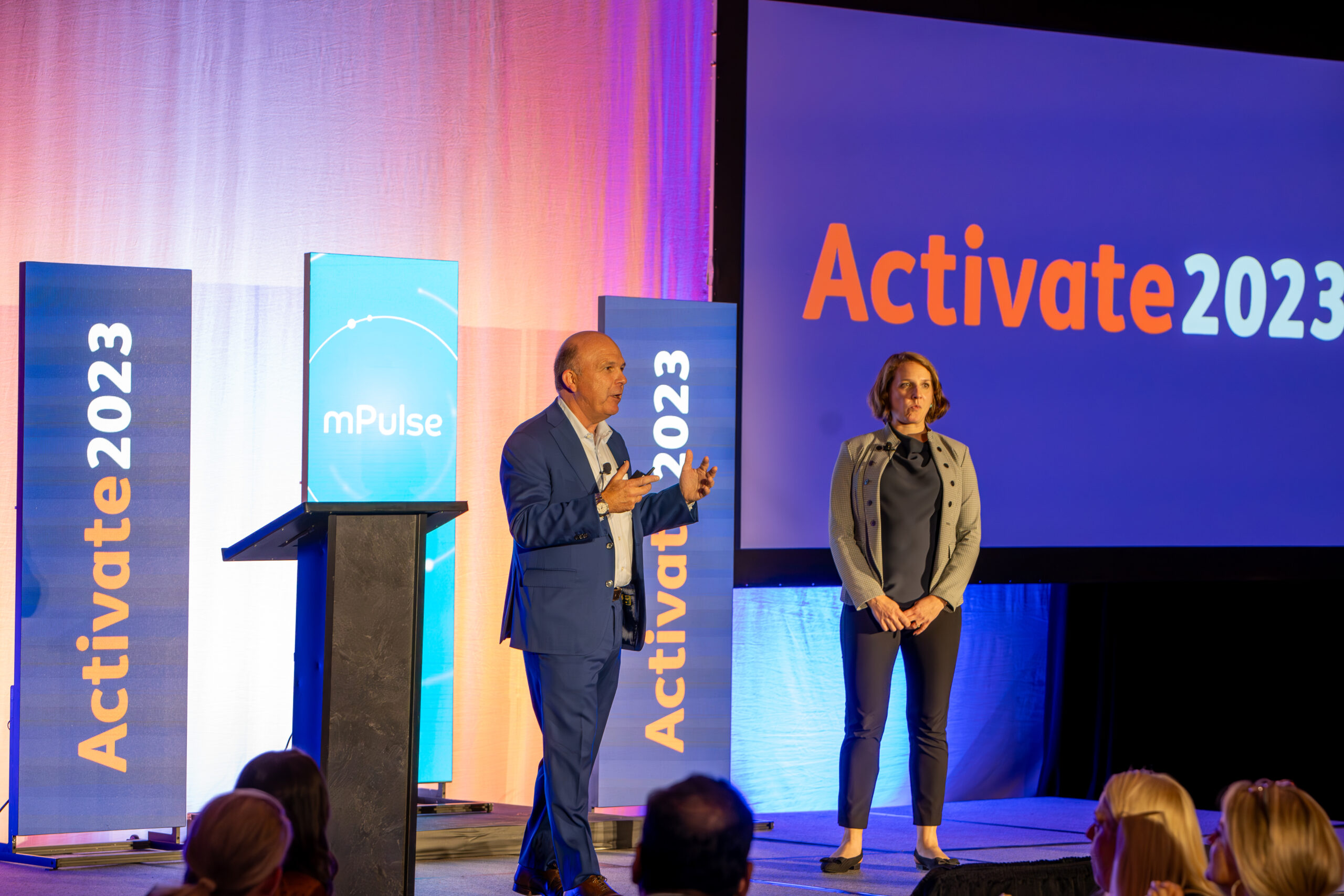In general, people don’t like being talked at. Successful, engaging communication requires talking, listening, and analyzing. Traditionally, healthcare communication has focused on outbound messaging without the ability for a person to respond in a meaningful way. This is a one-sided relationship. mPulse set out to develop new ways for healthcare companies to interact with people and to create a true, two-way, interactive dialog. Here’s how we did it.
Two-way Dialog
To figure out how to move away from one-way messages and begin two-way, engaging conversations, we realized the key is to learn more about each person and tailor messages accordingly. Instead of sending generic messages like, “Avoid allergies – pollen levels are high – here are some tips to help,” we begin by engaging people with a message like, “Do you have any allergies?” As we learn more about each person, we find out what allergies they have, when they suffer from them, and much more valuable information. Allergies to pollen are very different from allergies to dust, mold or pets. Now we send tailored messages that are likely to apply to individual needs and preferences rather than generic blasts. For people that don’t have allergies, we may ask a question like, “What other health issues are you concerned about?” If they respond that they would like to quit smoking or lose weight, for example, our software is smart enough to recommend a messaging campaign around smoking or weight loss for this person. As we learn new information, we update each person’s profile to build a fuller picture of their lifestyle and health.
People Are Not Robots
What happens when a human responds to the question, “Do you have allergies?” in a less predictable way than, “Yes,” or, “no?” Can a computer program tell the difference between, “Leave me alone,” and, “Thanks so much for the reminder?” By implementing Natural Language Processing (NLP), we are able to automatically analyze the sentiment in a text response and adjust future messaging accordingly. For example, NLP knows that the person that replied, “Leave me alone,” to a message was likely expressing negative sentiment. Now we know to adjust future communication by adjusting variables like time of day, frequency of communication, tone and content of messaging to keep this person as happy and engaged as possible.
Sentiment Analysis
Through processes like NLP and deeper analysis, we are able to see trends in sentiment. These trends apply both to campaigns and people. This means we are able to understand general sentiment about campaigns and messaging. We are also able to build a sentiment profile for each person. For example, let’s use a man named Paul. Over time, Paul’s text responses carry a positive or neutral sentiment. If Paul starts responding negatively to messaging, we are likely to adjust conditions like time of day, frequency of communication, and/or tone of messaging. Or, we may trigger a poll question to get feedback from Paul so we can improve his experience. The whole goal is to identify trends in Paul’s behavior and make any adjustments required to keep him engaged.
Topic identification
Using topic identification we began to uncover themes (through co-occurrences of words) that are associated with sentiment. For example, in a refill reminder campaign, “leave me alone” might commonly be associated with “I don’t need a refill.” Probing further, we might realize that we need to change the timing of the refill reminder for some members because they ordered a 2-month supply instead of a 1-month supply after the previous reminder.
Automating the Process
Understanding individual needs and preferences and then delivering appropriate messaging at the right time is the key to successful dialog. We continue to automate this process so we can analyze thousands of responses, quickly determine sentiment, and find common topics and themes to keep improving each person’s experience. To refine messaging, we use A/B testing in our message campaigns to validate the impact of tailored message workflows on sentiment and engagement. The whole goal is to provide the best healthcare communication experience for everyone.
To see what mPulse can do for your organization, request a demo.
Rena Brar Prayaga is a Behavioral Data Scientist at mPulse Mobile












